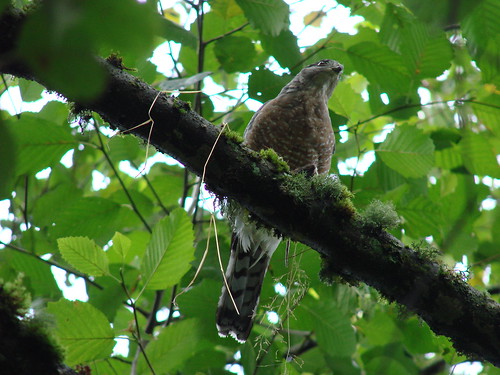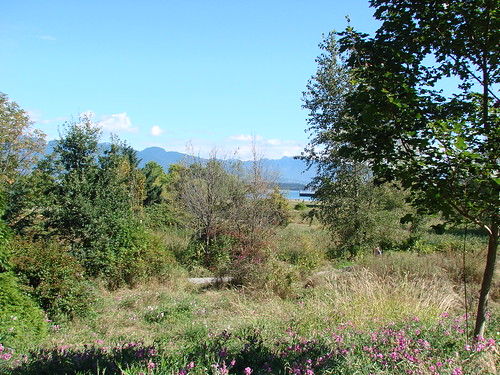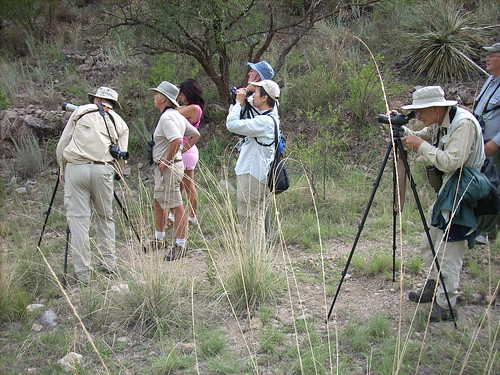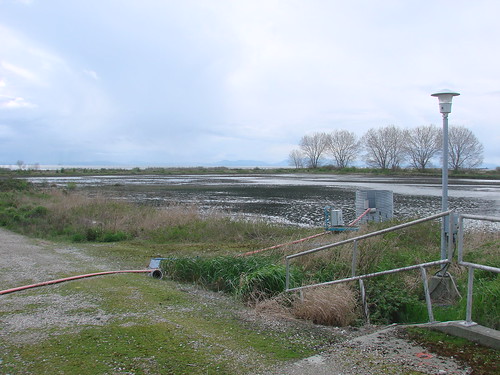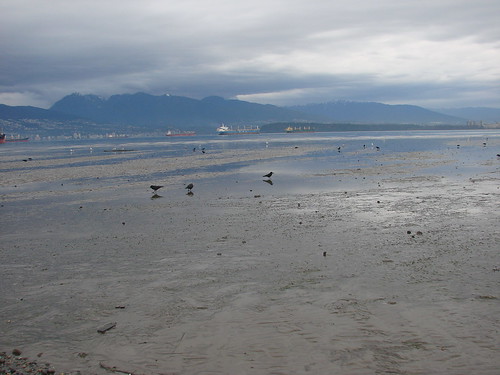It finally stopped raining, so after Gellert’s quick swim at Acadia Beach (complete with Pileated Woodpecker), we headed back to Jericho to see if anything was astir at that birdiest of Vancouver parks.
The first pond has been let down for some reason, so the abundant Mallards of dubious provenance were shoving themselves through the muck like feathered icebreakers on a suddenly thawed sea: not a pretty sight. Two Belted Kingfishers rattled their disapproval from the pond-side willows before flashing off to find deeper fish-filled waters elsewhere.

Once those noisy visitors were gone, I could start to listen in earnest–and immediately there were chips and lisps coming down from the trees. Black-capped Chickadees and Bushtits were the most abundant members of the flock, as expected at just about any time of year in the park, but they were joined by Western Warbling-Vireos, a Hammond’s Flycatcher, a couple of Western Wood-Pewees, Golden-crowned and Ruby-crowned Kinglets, and Wilson’s, Yellow, Orange-crowned, and a good eight or ten Black-throated Gray Warblers.

Migration! And it was like that all along all three of the ponds, Warbling Vireos and Yellow Warblers almost never out of sight, small gangs of Spotted Towhees and Lincoln’s and White-crowned Sparrows popping in and out of the brambles, Anna’s Hummingbirds buzzing through the remaining flowers. Will it be like this again tomorrow?

